“If you're doing sports photography, it's not sports photography you should be studying” — Alexis Berg
Recently, I had the amazing opportunity to shoot Ultra-Trail du Mont-Blanc, the most prestigious of ultra running races, with the one-and-only Alexis Berg.
UTMB is a grueling 170-km ultramarathon with more than 9,000 m (30,000 ft) of elevation gain around the tallest peak in the Alps. The most elite runners complete the course in less than 20 hours, while the average runner does it in 40 hours. That’s just those who finish, because out of the 2,600+ participants in this year’s race, more than 1,000 didn’t finish…
Alexis, the Salomon crew, and I followed the first 22 hours of the race together, getting a couple hours of “sleep” in the car while waiting for the head of the race to arrive at Courmayeur, on the Italian side, around 4 a.m. What made the experience even more special was having Alexis as my guide through the entire race, directing us to the most interesting spots and introducing me to a bunch of running photographers and key players. It felt like walking through the Sunday farmers market with the town’s mayor. Most runners and pretty much every photographer would come say hi to Alexis as testament to his 10-year commitment to the trail running photography scene.
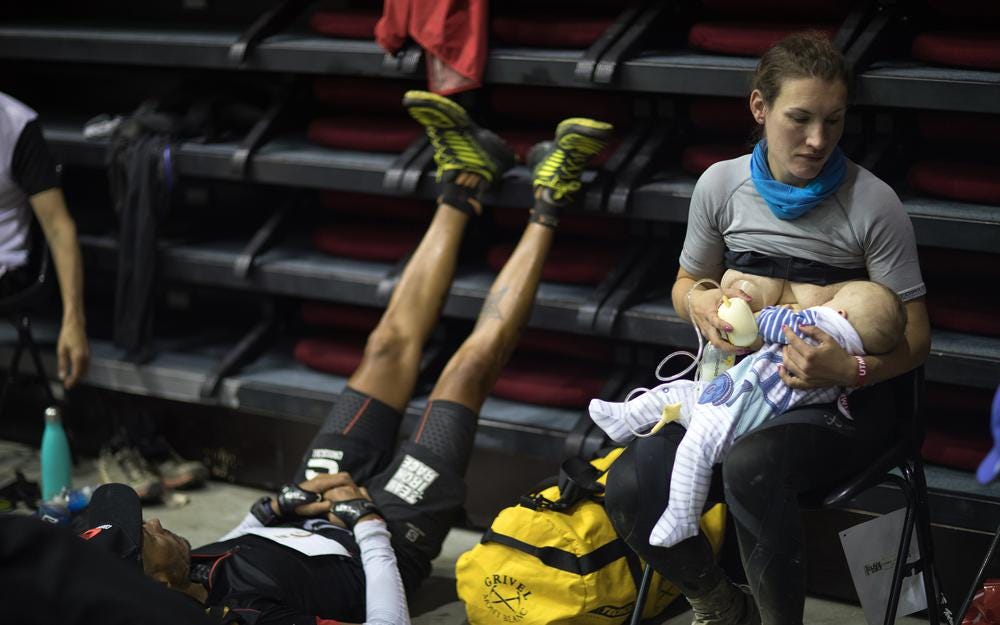
It’s always a treat to shoot with people who are very specialized at their “thing.” I come out of these experiences more inspired and curious than ever. On the flight back home, I thought you’d also benefit from the things I observed during those 24 hours together after the race.
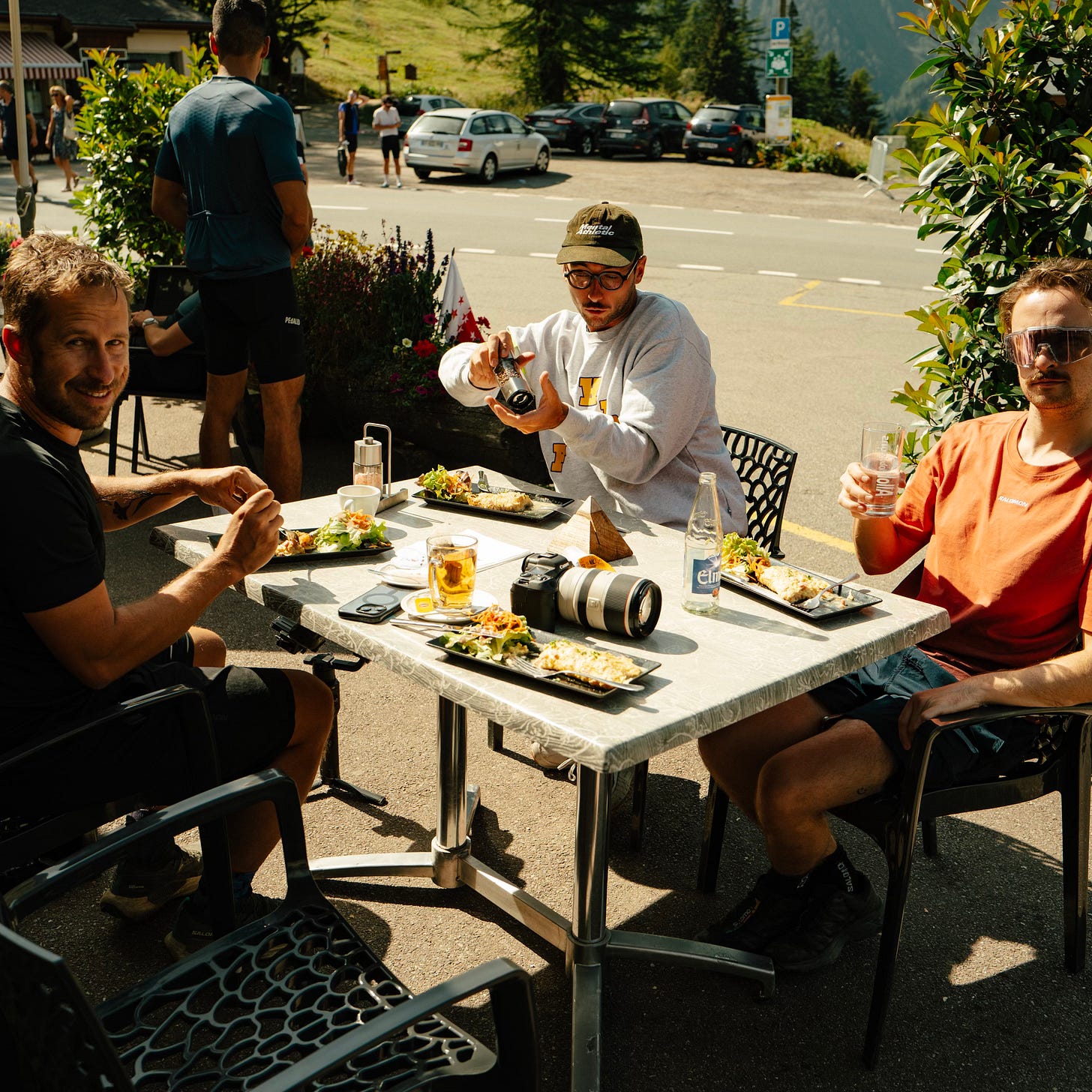
Here are the things I took away from watching Alexis work:
Know every top runner in the race, and know every brand involved
Know the race course inside and out
Check on live race progress constantly to position yourself at the best spots
Shoot with two bodies: one with a wide lens, one with a tight lens
Make in-camera selects
Use lens filters
These were just my impressions — my most educated guesses on what makes Berg’s work unique. Now, it’s time to get his take on my points and verify I haven’t missed the important things.
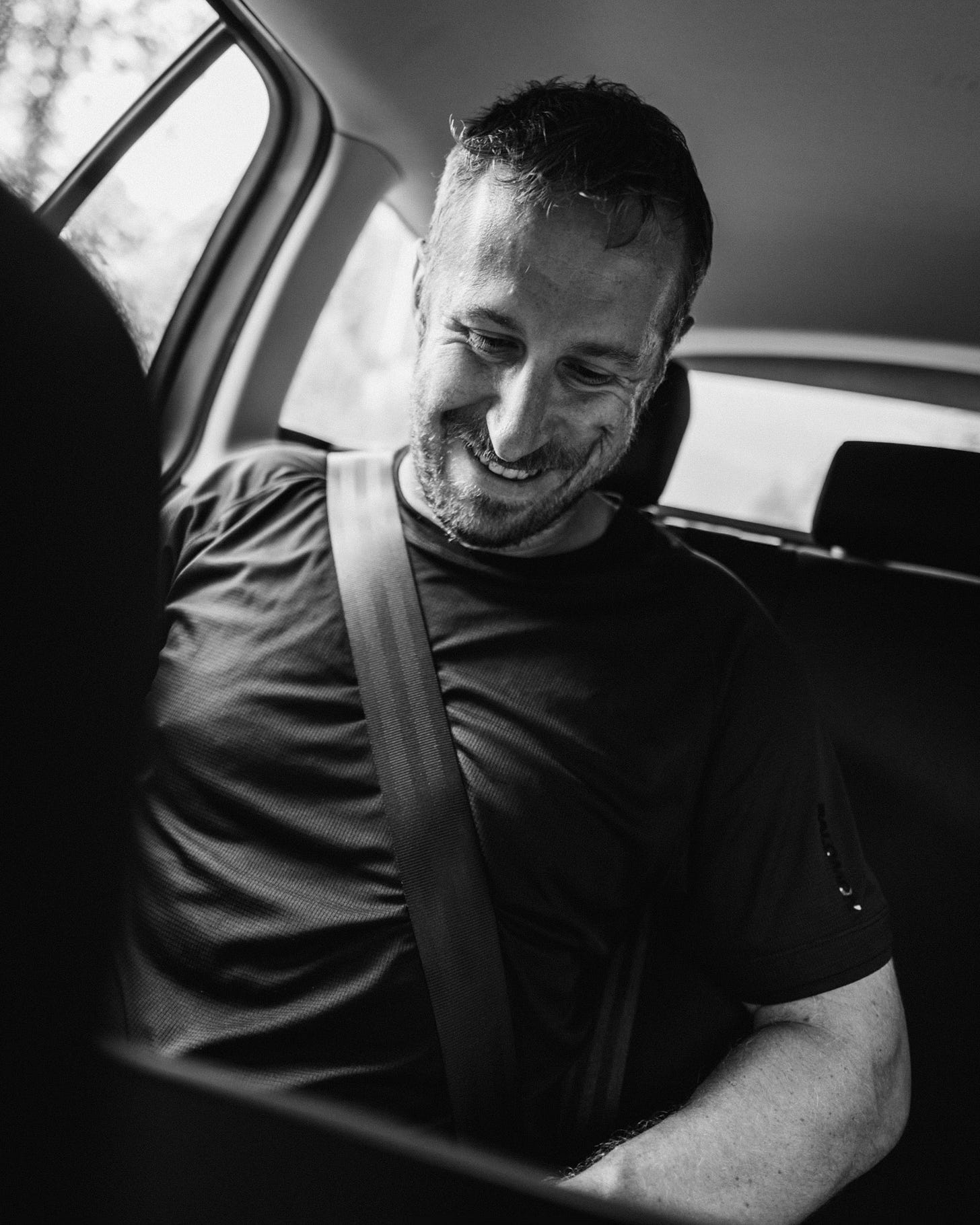
The Alexis Berg Interview
Thanks for doing this Alexis. Can you elaborate on my impressions above ?
I've been photographing trail running for over 10 years. In the beginning, it was an advantage to be an outsider, a naïve observer discovering everything. My eyes were curious, impressionable.
My position is very different today. I can anticipate, judge in a few seconds the originality of a situation, the potential of light. I focus on the unprecedented, with the desire to take a photo I haven't taken before, which is always a little harder, but nourishes creativity.
Photographing this sport in the mountains, I've done it hundreds of times. I know where I'm going. Some things are ritualized. I always have the same four or five favorite lenses, but each time I add something new — a new lens, different strange filters. I test things out, I like to try weird things. It's my way of remaining curious and constantly evolving.
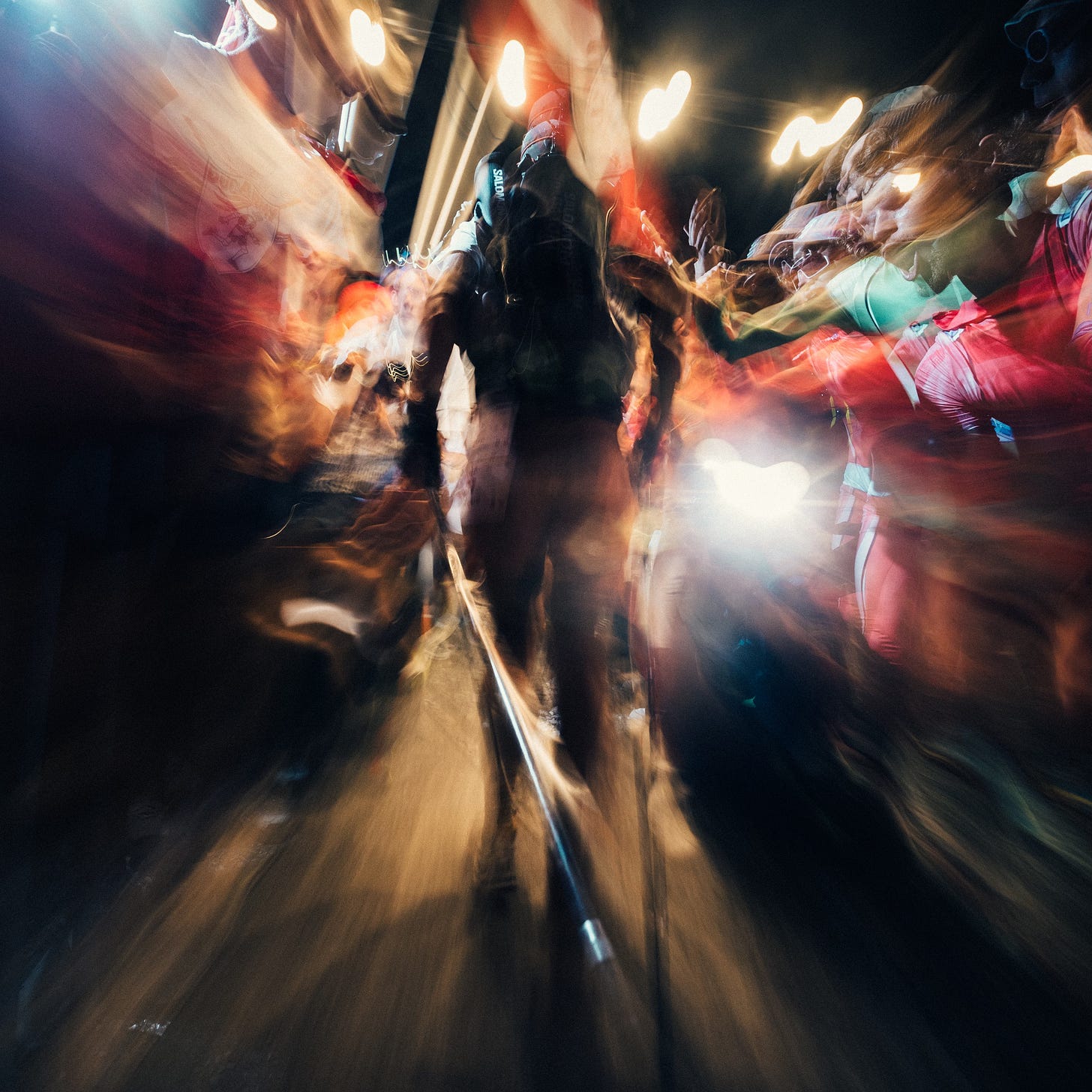
What else have I missed?
Study maps and topos. I use several mapping apps to observe relief, vegetation, and the position of the sun. I set off with a very precise plan, and then in the field I let myself improvise, sometimes flinching and making quick decisions.
Don't be afraid of bad conditions. Bright sunshine is often boring. I love fog, rain, and night. The worse it is, the more interesting I find it photographically.
What do you tell your beginners? What do you focus on that others miss?
The first tip is to shoot manually, even if it results in botched shots. It's the best way to understand light, which is the raw material of photography. I tell beginners the same thing I tell myself: think, innovate, surprise yourself. Flow and spontaneity are important, but the more intention and intelligence you put into a photo, the more chance you have of enriching the result.
If you're doing sports photography, it's not sports photography you should be studying. Look at the technical mastery of the portrait specialists, the originality of the photojournalists, the editing science of the fashion photo cracks.
I see a lot of very factual photos of these races from other photographers but few carry emotion, can you tell me more?
There are several explanations. Many photographers have fairly restrictive briefs, which require them to focus on a handful of athletes sponsored by their client. I'm lucky enough to have a certain freedom. It's a privilege to be somewhat recognized in my field, where I'm allowed to be more extravagant. This freedom awaits all photographers, one day or another. You just have to persevere and maintain your singularity.
Lastly, because everyone is going to want to know this, what’s your go-to camera kit to shoot a race?
For this UTMB I used the Canon EOS R5 Mark II and the EOS R3. My most-used lenses are the Sigma EF 24mm f/1.4, the RF 70-200 f/2.8, and the RF 50mm f/1.2.
Follow Alexis Berg on Instagram
Watching
We made a new episode of the No One Sees series!
For this one, we focused on Croatia and its islands. It seems like this spot is on everyone’s radar, so we thought we’d show a lesser-known part of it… Although we’ve stirred up quite the controversy in the comments section of the video. Either way, Isaac Johnston and I have poured many, many hours into this film, turning 65+ hours of footage into a 40-minute episode for your enjoyment.
I think this is our best episode yet, but let me know what you think in the comments or simply reply to this email — I read all of them.
Watch The Croatia No One Sees on YouTube
This newsletter is edited by Danny Smith








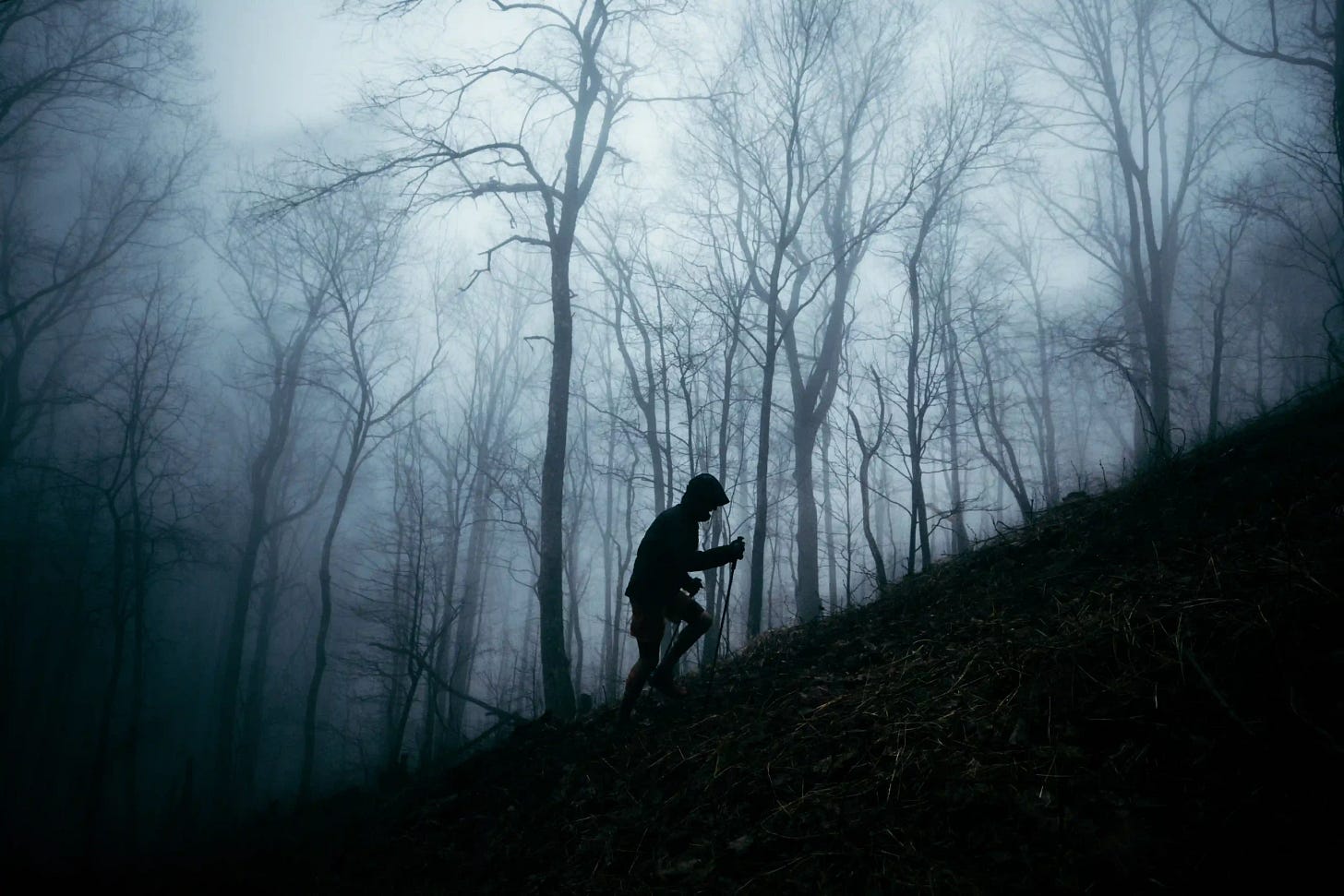




Great newsletter. Love the photos, would love to go shoot UTMB myself some day. What is your favorite town in the French Alps?
Haha, woah the Croatia vid did stir up the chat line, ha-ha. Only locals complain it’s not local enough, I’d never seen it 😂. When you posted the stories from UTMB I checked Alexis work, vibes! Nice to gather his thoughts on how he looks at it!
Nice newsletter mate 🤘🏼